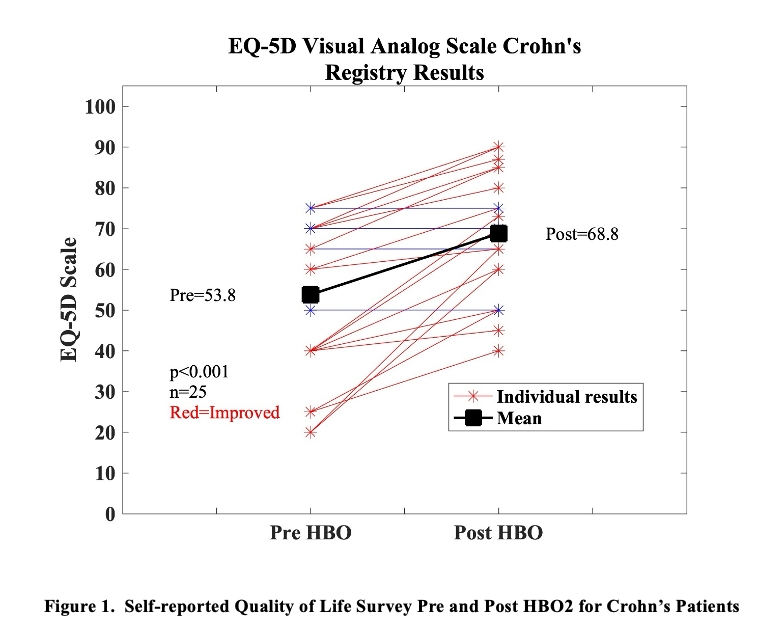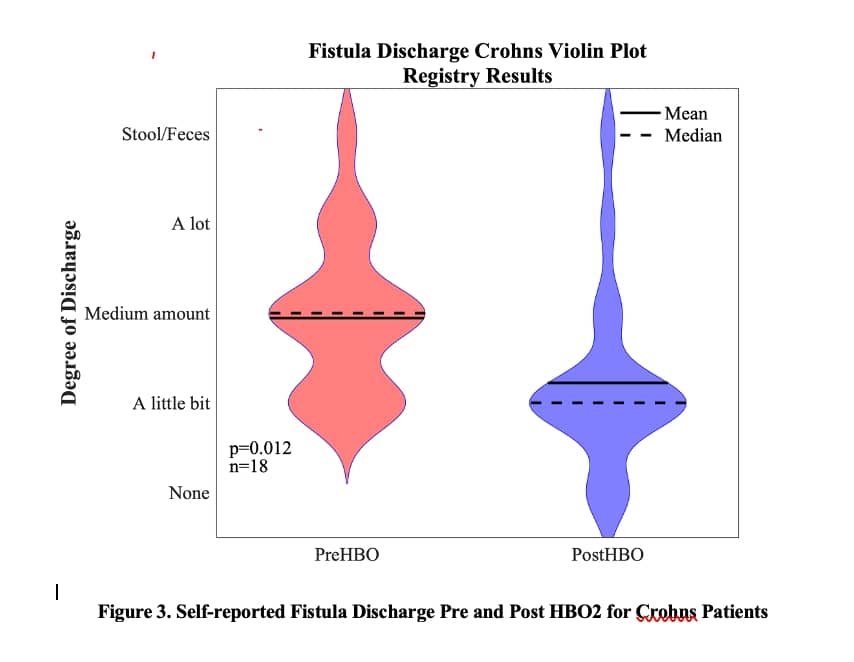
From the 2024 3rd Quarter Pressure

Update from the Multicenter Registry for Hyperbaric Oxygen Therapy
Outcome data from the Multicenter Registry for Hyperbaric Oxygen Therapy were well represented at the 2024 UHMS Annual Scientific Meeting this past June in New Orleans. Three poster presentations came from registry data. Additionally, Dr. Jay Buckey, director of the Center for Hyperbaric Medicine at Dartmouth-Hitchcock Medical Center and head of the steering committee for the Multicenter Registry, gave the Kindwall Keynote Lecture entitled “New and Developing Indications for Hyperbaric Oxygen Treatment.” This presentation included recent analyses of registry data and an overview of the current understanding of the physiologic effects of HBO2.
Particularly encouraging results were seen in analyses of HBO2 treatment for Inflammatory Bowel Disease (IBD). Although IBD (Crohn’s and Ulcerative Colitis) are not approved indications for HBO2 treatment, there are growing numbers of published reports that support its effectiveness. Multicenter Registry data were analyzed from 47 patients with Ulcerative Colitis and 40 with Crohn’s disease. Both groups showed improvement in inflammatory markers and bowel symptom scores with HBO2. Improvements in Crohn’s disease cases were particularly encouraging. There were significant improvements in patient-reported health measures (EQ-5D scores) (Figures 1 and 2). These held up to sensitivity analyses to test for bias if patients with missing data were not included in the analyses. Also, patients with Crohn’s disease with complete data reported a decrease in fistula discharge (Figure 3).



Poster presentations highlighting Registry Data included the following:
- “Multicenter Hyperbaric Outcomes Registry: 2023 Review” by JC Buckey et al. This reviews registered patients and treatment outcomes from 2023, participating centers, treatment indications, and referring specialties.
- “Improved musculoskeletal pain and range of motion following hyperbaric oxygen treatment for delayed radiation soft tissue injury in two breast cancer patients,” by EM Silverman et al. This was a case series of 2 breast cancer patients treated with HBO2 for painful radiation-induced fibrosis of the chest wall after partial mastectomy and radiation therapy.
- “Long-term follow-up results for the Multicenter Registry for Hyperbaric Oxygen Therapy,” by JC Buckey et al. This report describes the ongoing work within the registry to expand longer-term follow-up of patients who undergo HBO2 treatment to assess the durability of benefits, adverse outcomes, and patient satisfaction with treatment.
These studies demonstrate the importance of collaboration between treatment centers to strengthen the power of our data by combining patient populations. By examining and publishing registry data, we can support the need for randomized, controlled studies to expand and improve our use of HBO2.




















